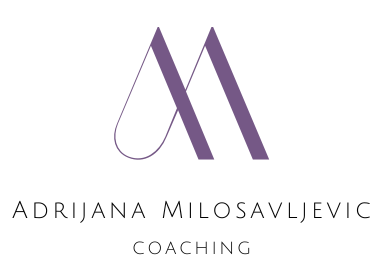As I reflect on the 17 titles I read in 2024, a few themes emerge that could describe my journey this year. Many of these books encouraged me to expand my understanding of coaching maturity—to examine which of my own perspectives were being tested and to build the courage to challenge others’ thinking.
Another significant focus was coaching supervision, where I explored frameworks, techniques, and insights that could enrich the quality of my work with supervisees and colleagues. These readings provided both structure and inspiration for elevating the reflective spaces I create.
Finally, books that introduced new tools, techniques, and approaches. These resources sparked creativity, encouraging me to consider how they might be applied in unique and impactful ways in my coaching and supervision practice.
It took time to reflect on how best to present these books—deciding which ones should be grouped together and why—ensuring that their stories and insights align meaningfully with the themes that emerged throughout my reading journey. Each book on this list contributed to a year of learning and transformation, and I’m excited to share these reflections with you while looking forward to the plans I’m already setting for 2025.
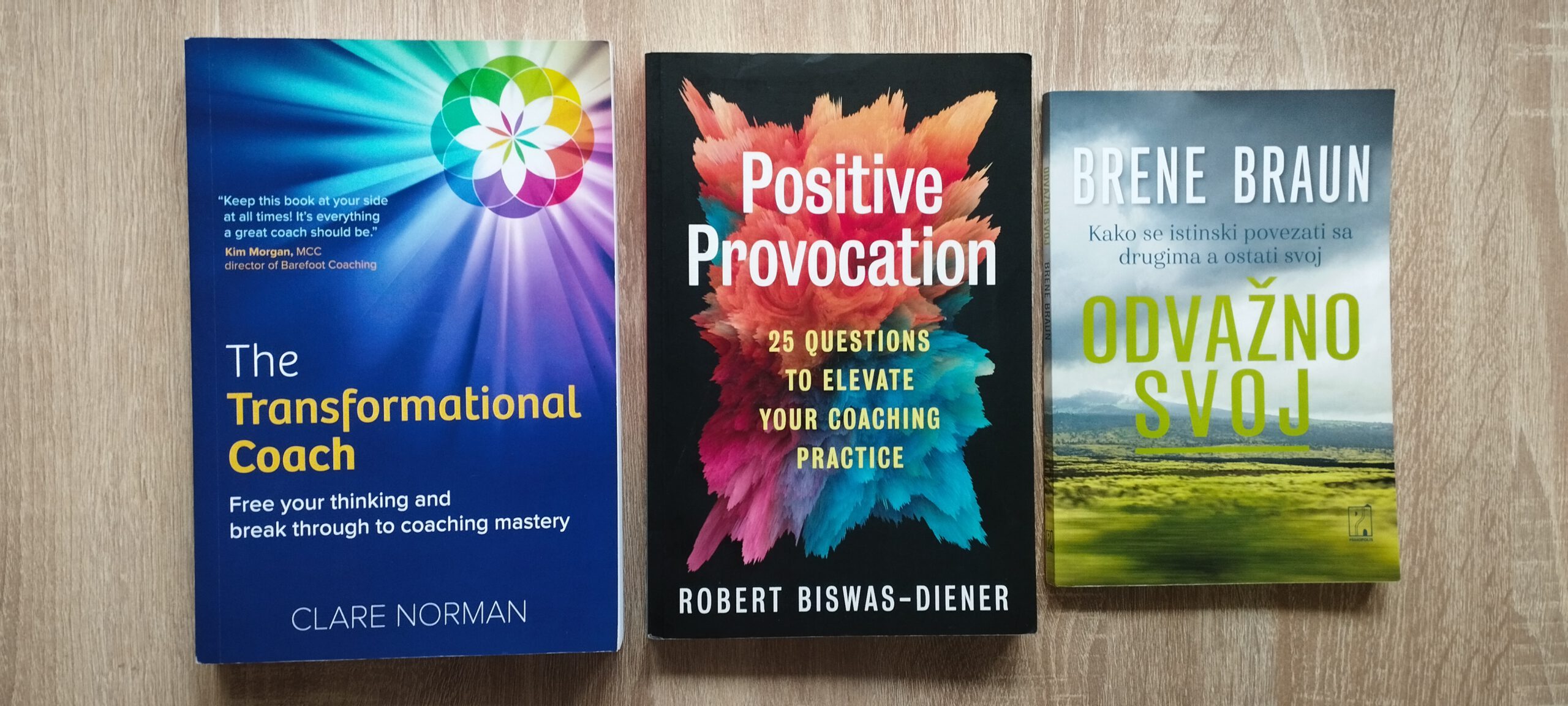
The Transformational coach – Clare Norman
If someone asked me to choose just one book from my 2024 reading list, it would be Transformational Coach by Clare Norman. This book raises essential questions about the role of a coach, making it a standout resource for anyone seeking to deepen their practice. Written in simple, direct language, the book is filled with practical examples that coaches can experiment with immediately. One of its central themes is the importance of unlearning—a concept that resonated deeply with me, especially as I remembered my transition few years ago from an ACC to a PCC-level coach.
Clare introduces 83 mindset shifts to help coaches break free from limiting habits and adopt a more transformational approach. Some of the shifts that stood out to me include:
-
Shift 3: “This should be the hard work for the thinker, not for the coach.”
-
Shift 38: “Be a partner, so thinkers can move out of consuming into thinking for themselves.”
These shifts emphasize that the coach has the responsibility for holding the process that enables new thinking to happen. They also reinforce the idea that the coach must adopt a mindset of a partner, not a service provider. -
Shift 10: About being curious on the thinker’s behalf.
-
Shift 17: About not having to understand everything.
-
Shift 27: “Being easeful leads to better coaching.”
These shifts made me reflect on the type of curiosity we bring into sessions. They also challenged me to consider how we sometimes focus too much on context, detail, or data—questions that may not always be necessary.
Positive Provocation – Robert Biswas-Diener
This was the most thought-provoking book I read this year. It consists of 25 questions or topics, thoughtfully divided into segments, each designed to challenge conventional coaching practices and encourage reflection.
One of the key ideas that stood out was the definition of coaching as “a conversation designed to engage the client in self-directed learning.” The book emphasizes that personal insight and self-awareness are the true currencies of coaching—a perspective that resonated deeply with me.
Another concept I found intriguing was the distinction between homework and experiments for clients between sessions. Biswas-Diener emphasises the importance of reframing these activities to encourage exploration rather than obligation.
The book also delves into the importance of developing ethical thinking and creating a personal framework for ethical decision-making in coaching.
For the first time, I came across the term “eloquent silence”—a powerful reminder of how silence can play a transformative role in coaching conversations. Additionally, the book highlights the value of approaching emotions as a resource within coaching sessions, rather than as obstacles to overcome.
To conclude, I’ll leave you with one of my favorite reflective questions from the book:
“What are you doing to improve not just your coaching but your observational skills?”
Braving the Wilderness (Odvažno svoj) – Brene Brown
This thought-provoking read dives into themes of belonging, courage, and authenticity, offering insights that feel both personal and universal.
“We want to be part of something, but it must be real—not conditional, false, or an eternal subject of negotiation.”
For someone like me, who has spent much of this year reflecting on the concept of belonging, one of the book’s most impactful sections was this: “True belonging is not passive. It’s not the belonging we feel when we simply join a group. It’s not about blending in, pretending, or going along with others just because it feels safer. It is a practice that requires us to be vulnerable, to sit with discomfort, and to learn how to be present with people without sacrificing who we are. We want true belonging, but it takes extraordinary courage to consciously step into difficult moments.”
Brown also writes about the dehumanizing nature of stereotypes. She highlights the paradox that, while we often hate being placed into boxes ourselves, we all too readily rely on convenient mental categories when characterizing others.
Although this is a list of books I’ve read, I can’t help but connect this theme of belonging to the fantastic online conference I attended this year about supervision, organized by Clare Beckett McInroy (I believe it still can be purchased on this link) which evoked similar feelings and reflections for me.
To end, I’ll leave you with this invitation from the book. Think how it would be to ” turn the lens around and take a panoramic view of our own world.”
Five Maturities – David Drake
Although it’s not a printed book, this resource deserves a special place on my list because of the profound impact it has had on my thinking. helped me normalize some feelings and doubts, and be okay with questioning things instead of sometimes just not feeling smart enough. 😀
Described by David as a “development resource for coaches,” this document is invaluable for anyone looking to explore coaching maturity beyond competency models. It invites reflection on what our clients and our environment truly need from us, both as professionals and as human beings.
If, by these few sentences, I’ve piqued your interest, here’s the link—be prepared to be inspired AND challenged!
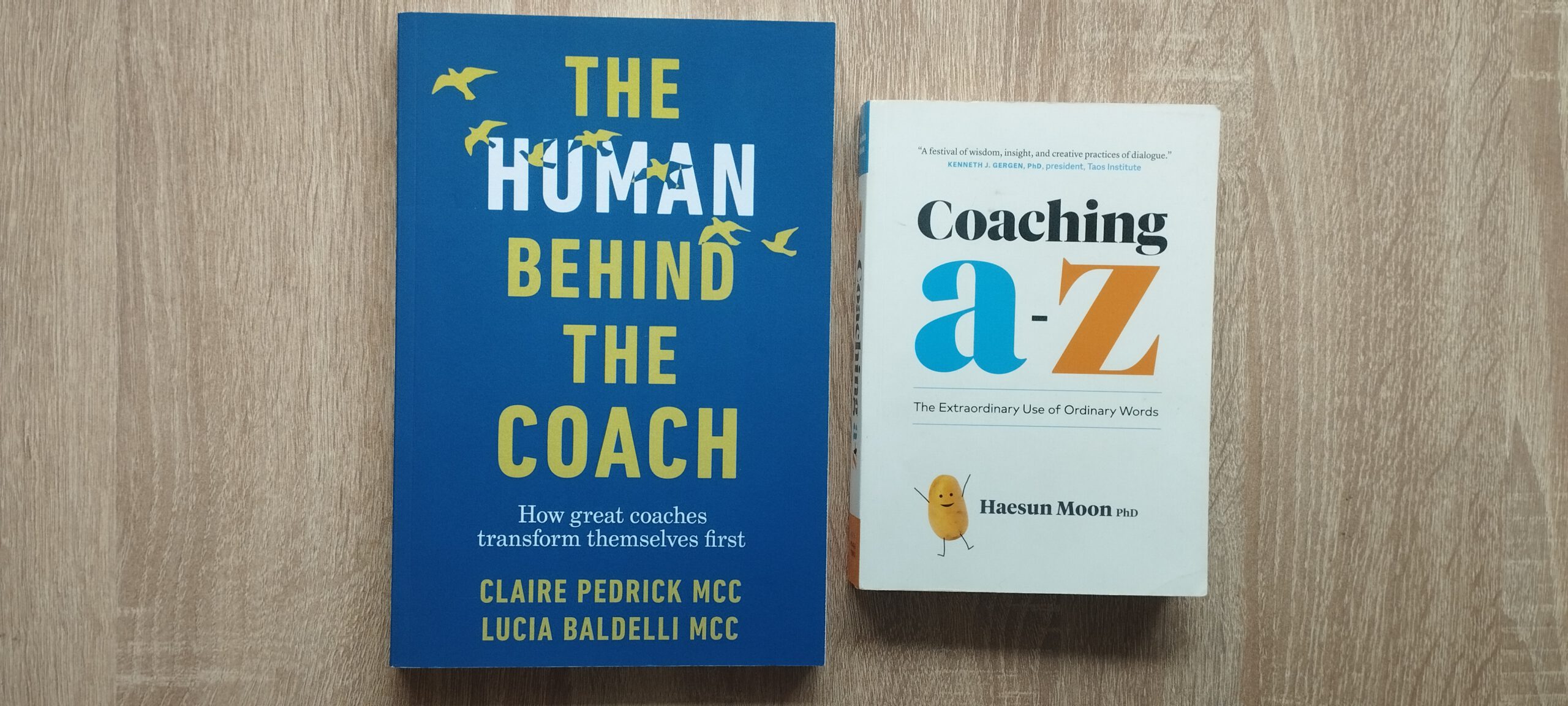
The Human Behind the Coach – Claire Pedrick/Lucia Baldelli
The messages from this book resonate strongly with themes I’ve encountered in some of my previous reads. One quote that particularly stood out to me is: “The importance of helping the client evolve in their thinking, so they can continue to reflect and come to their own conclusions, in their own time and their own way.” This perspective emphasizes the coach’s role as a facilitator of thought rather than a provider of answers, creating space for clients to navigate their unique journeys.
Another powerful quote is:
“Becoming a mature human being and becoming a mature coach both require us to rediscover our sense of curious wonderment—at our clients, at ourselves, and at the world around us.”
Key insights that particularly stood out to me include:
- The value of the work we do together is not about what the thinker hears us say. It is about what happens in them and what happens in the space between us.
- Flow demonstrates ease for the coach and the thinker. It emerges when we let go of the need to ask exactly the right question in exactly the right way.
- Coaching is the dialogue we facilitate. Yet, the most significant part of this dialogue is the conversation the client has with themselves.
This book also introduced me to the term “Teflon memory”, which I found particularly impactful. Similar to how Positive Provocation introduced me to the concept of eloquent silence, Teflon memory is about the coach not needing to hold on to or remember everything they hear. Instead, it’s about developing the habit of self-forgetting, allowing us to stay fully present and attentive so that our companions can do their best work.
Lastly, I want to highlight one final message from this book, though there are many others worth sharing:
“Every single conversation is a blank canvas that you will co-create—even when you have worked with someone many times before.” This idea captures the essence of approaching each coaching session with fresh energy, curiosity, and openness.
Coaching a-z – Haesun Moon
As with the previous book, this one is about being human with others.
“What occupies your heart-space?” This is one of the most impactful questions, found within the first pages of Coaching A-Z. From the very beginning, this book sets a tone of gentleness and curiosity that resonated profoundly with me.
It’s hard to describe this book in many words, as my impressions are more on the feeling side—I felt the softness and thoughtfulness of Haesun Moon’s style throughout. Her writing carries a poetic, almost magical quality, which I believe you can sense if you listen to any of her talks online.
The book is structured alphabetically, with each chapter starting with a word that serves as a thematic focus. At the end, you’ll find a Reflection Guide filled with questions to inspire your own self-reflection.
What stood out to me most, however, were the stories Haesun shares. Personal and insightful, they are told in a way that inspires and stays with you.
A memorable quote for me was:
- “Be curious what matters to another person instead of what is the matter with the person.”
The book also offers some interesting definitions of coaching:
- “Coaching is curating stories of purpose, possibilities, and progress.”
- “Coaching is not just questioning differently; it is more about listening differently.”
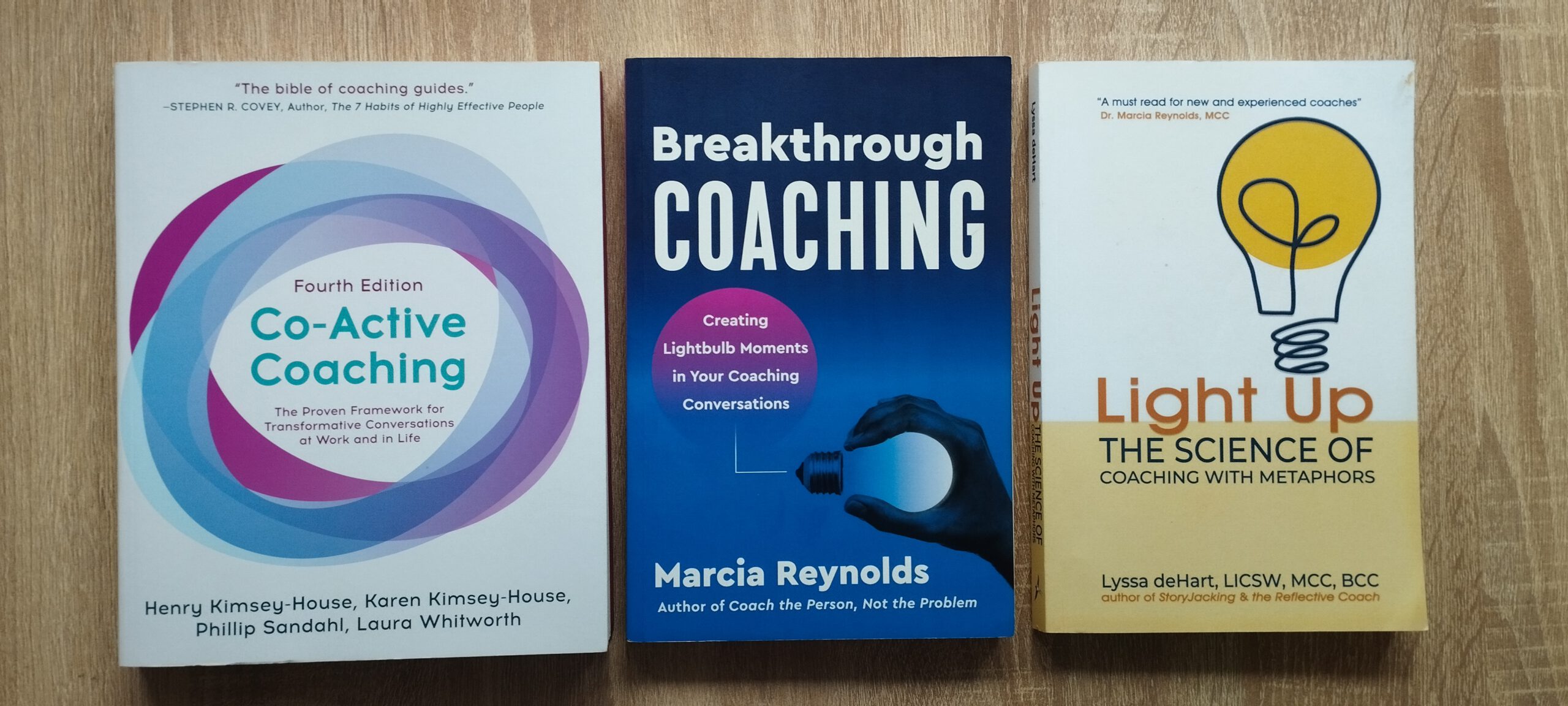
Co-Active Coaching – Henry Kimsey-House, Karen Kimsey-House et al.
I bought this book because I noticed many coaches on LinkedIn sharing their experiences with the Co-Active school and approach. From the very beginning, the book emphasizes a similar message to some of the other books I’ve read about the role of the coach:
“We should not be worried hand-holders.” Instead, coaches assume that others are resourceful and creative, approaching conversations with curiosity and openness to possibilities.
Early on, the authors encourage us to go beyond words in our coaching:
“Every conversation creates tone, mood, nuance. There is as much information, sometimes more, in how the words are said versus the words chosen; sometimes there is more information in what is not said than what is said.”
The book also highlights the importance of the small, daily choices we make:
“No matter how trivial they may seem, they contribute to creating a life that is more (or less) fulfilling.”
A significant takeaway for me was the emphasis on the coach’s self-management:
“In order to truly hold the coachee’s agenda, the coach must get out of the way. Self-management is the ability of the coach to set aside personal opinions, preferences, pride, defensiveness, and ego. It means giving up the need to look good and be right.”
Another chapter focuses on the role of intuition in coaching, describing coaching as an “intuition fitness gym,” which I found to be a unique and inspiring metaphor.
Finally, something that deeply resonated with me was the importance of creating a judgment-free space—a place where people can sit in their discomfort as they pursue meaningful change.
Breakthrough Coaching – Marcia Reynolds
In Breakthrough Coaching, Marcia Reynolds echoes an idea found in previous books:
“Discomfort is evidence that a new awareness is forming.”
This insight talkes about the transformative nature of coaching and how leaning into discomfort can spark meaningful growth.
Marcia also emphasizes the importance of providing space for the coachee. She writes:
“Take a moment before every conversation you have to consider how you can release your thoughts to witness the awesome uniqueness of the person you are about to engage.” This practice reminds us to let go of our expectations and approach each coaching session with openness and presence.
A recurring theme throughout the book is the encouragement for coaches to offer and share, even if their intuition or observations might not be entirely accurate. As Marcia explains, doing so can still deepen the coachee’s thinking and understanding. For me, this felt liberating—an invitation to be present as a coach without the pressure to always be right or deliver perfect interventions. She encourages us to “release our discomfort so we can coach people through theirs.”
One of the benefits of coaching that Marcia highlights is:
“Prompting them to examine the map of their thinking, broadening their capacity to think, and helping them paint the picture of what is possible.”
As in Co-Active Coaching, the book revisits the question of “the sense of fulfillment” as one of the most important inquiries in coaching. Marcia also addresses the gap between knowing and doing, dedicating a section to ways to help coachees turn insights into actionable commitments.
Light Up – The Science of Coaching with Metaphores – Lyssa deHart
In this insightful book, the author highlights a key challenge: “The need to make sense of someone’s internal landscape takes us away from the more profound work of supporting them to make their own sense.” Instead of offering our interpretations, the book encourages us to hold space for discovery, allowing clients to make meaning for themselves.
The process is described in a really interesting way: “All we know can be used to inform our curiosity, then rinse, wash, and repeat as we test our hypothesis in the form of inquiry for the benefit of the client’s awareness and clarity.” This cycle of curiosity and reflection fosters a deeper understanding, empowering clients to develop their own insights without the interference of external perspectives.
A particularly fascinating part of the book is its exploration of metaphors as tools for communication and clarity. I really liked how Lyssa describes metaphors at one point: “Metaphors are a passageway through the inherent confusion of understanding and communicating complex ideas.”
Lyssa also shares a caution about coaches introducing their own metaphors, as “it could potentially contaminate the space with their perspective and meaning-making.” This is an important reminder to let clients discover and shape their own metaphors, as this allows for a more authentic and unfiltered exploration. Interestingly, the book references studies showing that “people use about six metaphors a minute,” highlighting just how naturally metaphors appear in our everyday communication.
This book provides many practical examples, including transcripts of real sessions, to illustrate how metaphors are embedded in coaching. The analysis of these examples makes the concepts accessible and applicable, offering readers a chance to see the ideas in action.
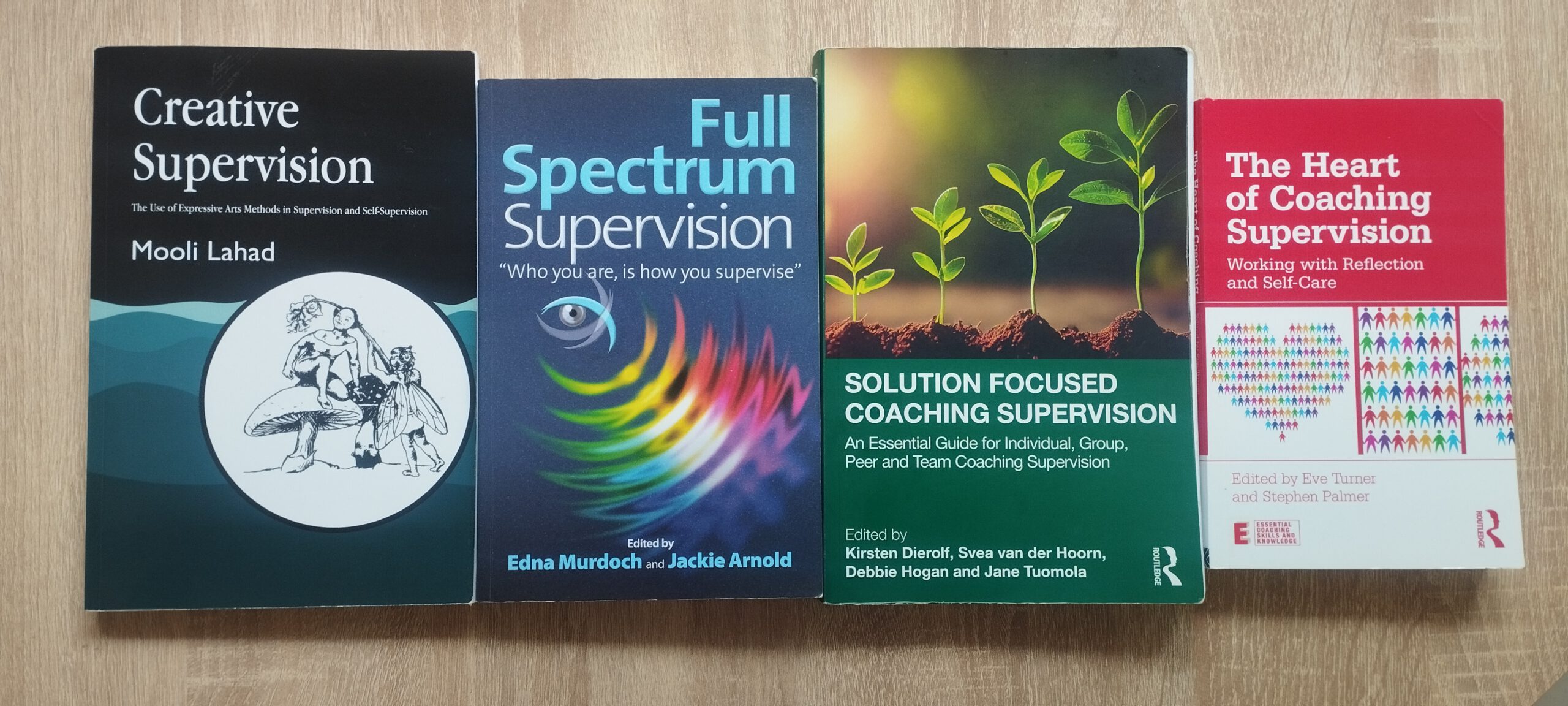
The Heart of Coaching Supervision – Eve Turner & Stephen Palmer
The Heart of Coaching Supervision begins with an essential idea: we need to take care of ourselves to better support others. The book emphasizes this throughout, with its final chapters reinforcing the importance of self-reflection and looking after ourselves. This book also highlights many ways in which supervision supports practitioners. It provides fresh perspectives, ensures the quality of their work, fosters personal growth and self-awareness, and helps navigate complex relationships.
One of the models that stood out to me is the 3Ps of Supervision: Philosophy, Purpose, and Process. Another impactful contribution is Peter Hawkins’s thought-provoking question: “Where is the source that resources us, the holding presence that sustains us and gives meaning to our work, our lives, and our existence?”
Hawkins also introduces the idea of the “collective learning edge” in the book. This concept focuses on learning together in the moment, pushing both the client and supervisor beyond what they already know to discover something new as a team.
Throughout the book, there are many thought-provoking questions, such as:
- What feelings do you notice when you enter or leave a room? Who do those feelings belong to—you, the supervisee, the coachee, or someone else?
- How much further can you go in your own thinking before you need my input?
The Heart of Coaching Supervision is a practical and insightful guide. It provides tools, ideas, and reflections that help supervisors improve their practice and relationships. Above all, it reminds us that looking after ourselves is essential. When we take the time to reflect and resource ourselves, we can better support others in meaningful and sustainable ways.
Solution Focused Coaching Supervision – Kirsten Dierolf, Svea van der Hoorn, Debbie Hogan and Jane Tuomola
I want to begin this review by acknowledging that I am allowing myself to be biased toward the topic—and especially the team of writers. Kirsten Dierolf has influenced my thinking in profound ways over the past several years, and Svea has been a source of inspiration and support for me during the whole 2024.
This book focuses on the Solution-Focused approach (a method I personally like and practice in combination with others) applied specifically to supervision. As Svea often says, “Words make worlds,” and the words in this book made me aware of what I already do in supervision and helped me appreciate it even more.
From the very start of this book, one question stayed with me: How do we as practitioners respond to complexity, ambiguity, and uncertainty with creativity and ingenuity—grounded in what the supervision client wants to be known for and in the quality and integrity of our communication with them?
The role of a Solution-Focused supervisor, as described in this book, is to act as a facilitator—guiding clients or teams to construct their own solutions by drawing on their unique strengths and resources.
The book is full of practical examples and engaging conversations, such as Lyssa’s discussion of metaphors above. It also emphasizes a systemic perspective, interconnectedness, and the importance of context in supervision.
One of the standout chapters for me is the one on Deliberate Practice, which I believe makes this book unique in this year’s reading list. Another highlight is the chapter by Christina on the role of Reflective Practice in supervision.
In the final part of the book, the authors dive into the specifics of Group Coaching Supervision, Peer Supervision, and Team Coaching Supervision. This section blends theory and practice beautifully, offering a perfect mix for both new and experienced supervisors.
Full Spectrum Supervision – Edna Murdoch and Jackie Arnold
Full Spectrum Supervision introduces the Full Spectrum Model, a framework that combines dynamic, systemic, cognitive, and contemplative approaches.
Supervision, as described in this book, is particularly important when we reach the edge of our competence or feel overwhelmed. It provides a space to step back, reflect, explore, and admit when we don’t have all the answers. This openness allows for growth and renewal in professional practice.
The book highlights that supervision benefits a wide range of professionals beyond coaching, including therapists, social workers, managers, HR professionals, business leaders, educators, and health professionals. It can be just as relevant in boardrooms as it is in public sector settings.
One chapter that stood out to me focuses on reflective learning and becoming a reflective practitioner. This idea resonated strongly with me, as reflection has been a major theme in my 2024. The book emphasizes how essential it is to approach reflective learning with honesty, compassion, and courage.
I especially loved this quote: “The key to effective reflective learning is learning how to openly, honestly, compassionately and courageously inquire, examine, review, question, re-evaluate, and own our experiences (our own feelings, thoughts, assumptions, behavior, and actions within a situation) in order to learn, to reframe, and to learn how to apply that learning going forward.” In addition, this book, like some others I’ve read this year, mentions the use of Clean Language—a method I find intriguing and plan to explore further in 2025.
Creative Supervision – Mooli Lahad
Creative Supervision explores the use of expressive art methods in supervision and self-supervision, beginning with a thought-provoking story about a rabbi known as a mindreader and a boy holding a butterfly in his hands. The boy asks the rabbi if the butterfly is alive or dead, setting the tone for a book that encourages reflection, creativity, and new approaches to supervision.
The chapters are as varied and imaginative as the methods they introduce. Titles like Color, Shapes, and Lines invite us to play with crayons, while The Use of Stories, Films, and Plays in Supervision explores narrative as a tool for understanding. Other chapters include Letter Writing and Imagined Dialogues, Images and Guided Fantasies, and Therapeutic Cards and Spectrograms. Each method encourages supervisors to explore how supervisees experience and interpret the world.
The book also tackles difficult topics like Crisis and Resistance, offering creative ways to support supervisees during challenging times.
Overall, Creative Supervision inspires readers to embrace playfulness and curiosity in their work, inviting them to explore new techniques and expand their practice.
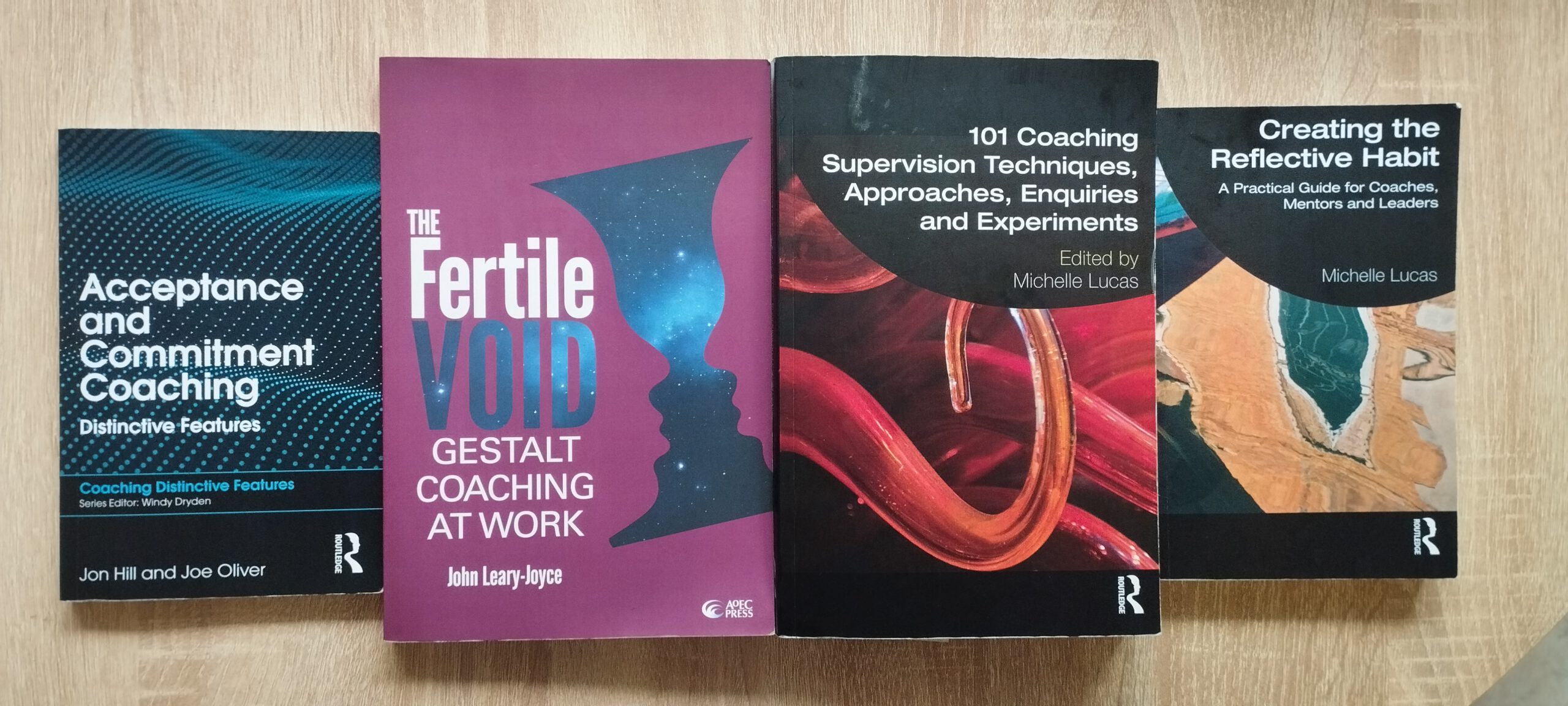
Acceptance and Commitment Coaching – Jon Hill and Joe Oliver
I first encountered the concepts of ACT (Acceptance and Commitment Therapy) during a course in Serbia, facilitated by the amazing professor Igor Krnetić. When I saw this Routledge edition, I felt compelled to revisit the field and explore its application in coaching. Diving into the book was a chance to refresh my understanding of psychological flexibility and its six core processes.
One of the things I appreciated most about the book is how it describes the coach’s role—not as an expert on the client’s topic, but as a facilitator for value-based change. A key question the book addresses is: How do thoughts, feelings, and behaviors work to help our coachees move toward the things that truly matter to them?
The book emphasizes identifying workable strategies and practicing them—even when faced with the natural pull back into old, automatic responses. It also offers different definitions of values, describing them as answers to the question “why,” chosen life directions, and what we want to stand for.
A significant part of the book focuses on the importance of experiencing and sitting with uncomfortable thoughts and feelings. This resonated deeply with me, as it reflects the transformative power of accepting and working through discomfort rather than avoiding it.
In the chapter on mindfulness, I appreciated the explanation that mindfulness isn’t limited to meditation—it can be cultivated in many other ways. This practical approach makes mindfulness accessible to a wider audience, aligning it with the needs of coaching clients.
One quote that stood out for me was:
“The life on autopilot is a life half-lived.”
Another powerful insight shared in the book is:
“The more coachee is able to mindfully observe their thoughts and feelings, the more they can observe their own patterns and habits and get a sense of their mind at work. The more they can consciously anchor themselves in the present moment, the greater their capacity to take conscious, value-driven decisions.”
Finally, the book introduced me to a term I hadn’t encountered before: flexible persistence.
Fertile Void – John Leary-Joyce
Fertile Void explores Gestalt coaching at work, focusing on “becoming more of who we are”. It emphasizes exploring, uncovering, and understanding what is truly happening—from the inside out. .
A key element of this approach is engaging fully with what is happening through our five senses. It also highlights the importance of the space between coach and client, where meaning emerges from the dynamics of the shared situation. The book places a strong emphasis on the relationship between coach and coachee, framing it as the immediate and concrete place for change to happen.
Gestalt coaching approach is described as providing a compass rather than a rigid roadmap. The importance of silence is also explored, along with developing the confidence to stay present in moments of stillness.
I found it interesting how coaches are encouraged to bring sensations they feel in the coaching session to their awareness and even share them with the client. Here is an impactful question posed in the book: “Are you paying attention to your level of engagement with the person or situation?”
As a coach, raising your coachee’s awareness of their patterns of behavior takes priority over diagnosing, hypothesizing, or fixing. Coaches are encouraged to be curious rather than critical about the client’s internal world.
As I’ve been building a “dictionary” of concepts from my 2024 book reviews, Fertile Void introduced me to a new term: creative indifference. This refers to being fully empathetic and engaged without attachment to specific results or outcomes. The element of indifference is not about the person but the outcome. This perspective reminded me of the PCC marker “sharing observations without attachment,” which is part of the foundational coaching guidelines.
One of the final chapters is dedicated to developing a signature presence. I enjoyed reflecting on this concept and how I’d like to continue shaping my own approach moving forward.
101 Coaching Supervision Techniques, Approaches, Enquiries and Experiments – Michelle Lucas
This book is an excellent blend of theoretical approaches and practical tools. Each technique is clearly rooted in a specific approach, making it easy to understand where it comes from and how it can be applied.
The chapters cover an eclectic perspective on coaching supervision, followed by existential, Gestalt, person-centered, positive psychology, psychodynamic and developmental TA, solution-focused, systemic, thinking environment, and transpersonal approaches.
What I liked most about the book is how well it is organized. Each technique includes a small visual showing where and how it can be used, along with recommendations for the supervisor’s level of experience. This makes it useful for both new and experienced supervisors.
Another great feature is the “word of caution” included, helping readers understand possible challenges or limitations. The book also describes alternative uses for some techniques, adding even more flexibility.
I also appreciated the richness of recommended literature in this book and the one below (Creating Reflective Habit), which adds depth and inspires further exploration.
Creating the Reflective habit – Michelle Lucas
Book explores the concept of reflective practice, encouraging readers to be open to experimentation. It provides valuable insights into what reflective practice is and the many benefits it brings. Reading this book inspired me to write an article on the topic for EMCC Serbia.
One of the key questions posed in the book as a the title of one chapter is: How can we strengthen our reflection muscle? This question sets the stage for practical strategies and approaches to develop reflective habits.
The book is organized into chapters that introduce various prompts and techniques for reflection, including:
- Cognitive Prompts
- Visual Prompts
- Auditory and Kinaesthetic Prompts
- And, my personal favorite, Poetry.
I was also excited to se on LInkedIn that Michelle is starting to work on preparations for the next edition and I’m looking forward to hold it. 🙂
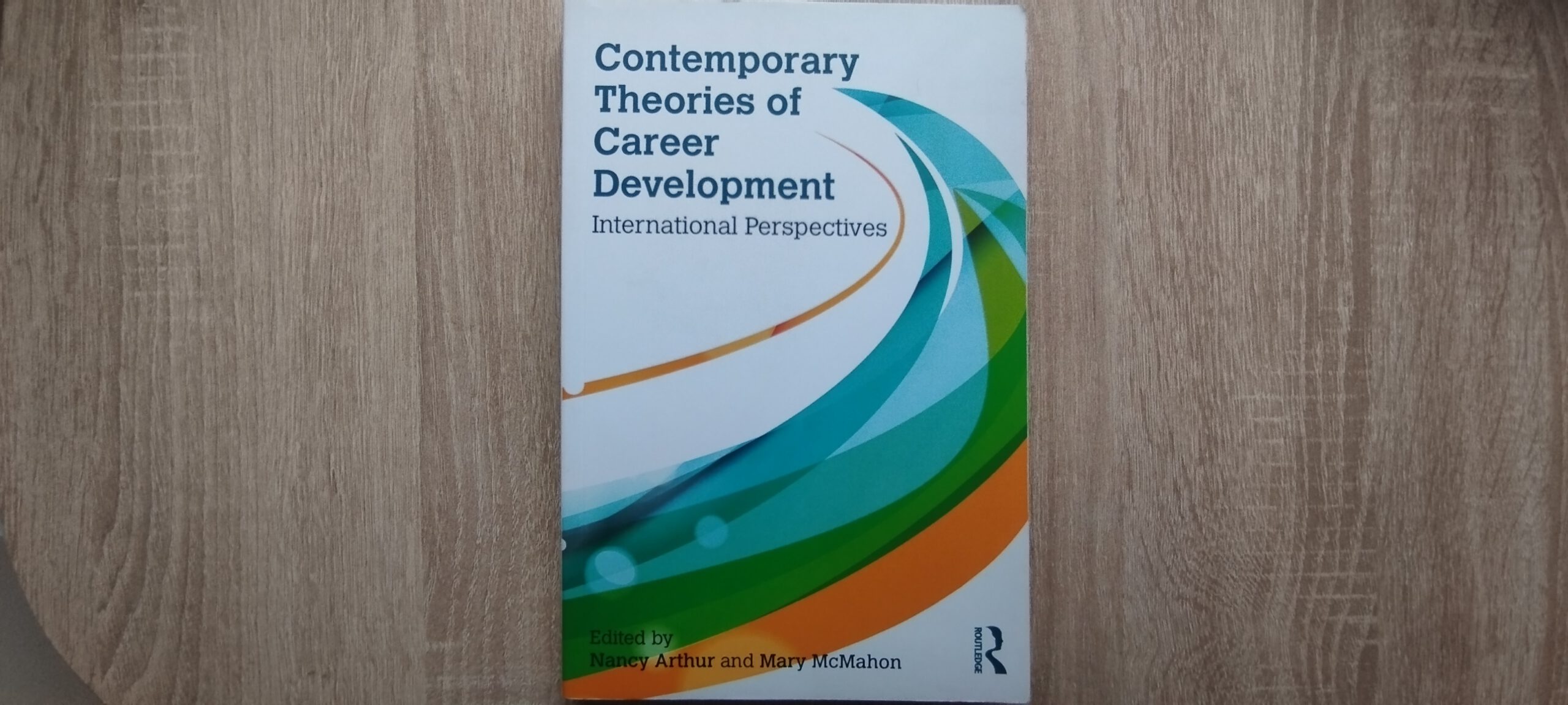
Contemporary Theories of Career Development – International Perspectives – Nancy Arthur and Mary McMahon
As I began developing some career coaching program this year, one of the key resources I turned to was a book about career development theories.
The first part of the book covers foundational career theory, followed by a discussion on contemporary theoretical perspectives. It concludes with a chapter on moving the field forward, which explores future directions for the field of career development.
What fascinated me most was seeing how career development theories have evolved over time, reflecting different conditions and cultural contexts across the world. It gave me a broader understanding of the diverse factors influencing career development for individuals.
The book is filled with case studies, analyses, and exercises that provided both practical insights and inspiration for my own work.
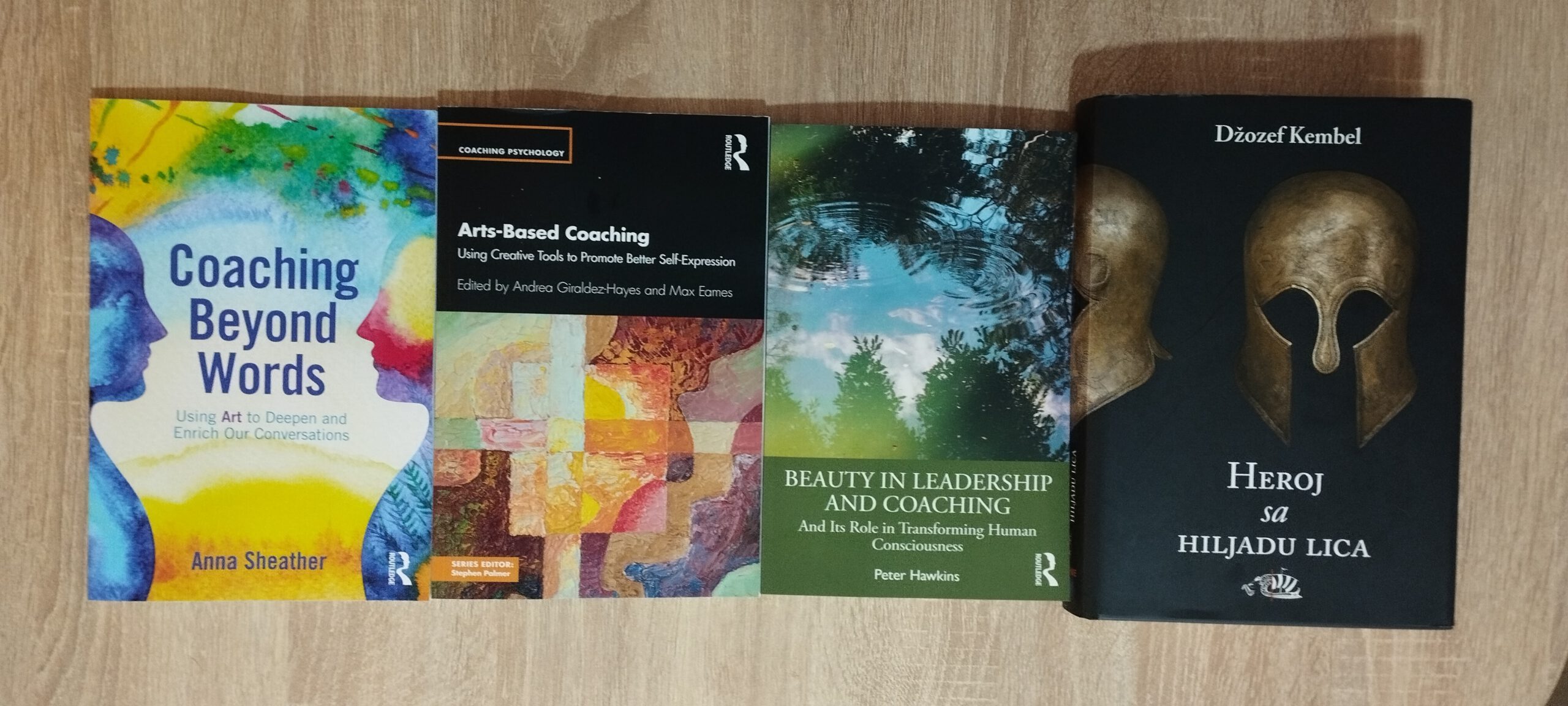
Reading list for 2025 🙂
Writing these book reviews has been a meaningful journey. Reading has been an important part of my life ever since I was five, and for this post, I spent weeks revisiting and reflecting on the books I’ve reviewed. Over the past days, I worked on them daily to bring this post together.
If there’s one key learning I’d take from this process, it’s this: start writing gradually, perhaps monthly, throughout the year. This approach would make the process more balanced while still capturing the essence of each book. 🙂
For us living in Serbia, having books in our hands can sometimes feel like an achievement in itself. With Amazon and similar websites shipping costs often exceeding the price of the book. I can easily order just Routledge editions, while for others, I ask friends abroad to bring them during their vacations or festive visits.
Here are some titles for my 2025 bookshelf and most of them are already on the table. 🙂
- Cultivating Coachability: How to Leverage Coaching Readiness So Thinkers Can Optimise Value by Clare Norman (waiting to arrive any moment from Netherlands :))
- Arts-Based Coaching: Using Creative Tools to Promote Better Self-Expression and Learning by Andrea Giraldez-Hayes and Max Eames
- Coaching Beyond Words: Using Art to Deepen and Enrich Our Conversations by Anna Sheather
- Beauty in Leadership and Coaching: And Its Role in Transforming Human Consciousness by Peter Hawkins
- The hero with a thousand faces by Joseph Campbell
- Becoming an ICF Credentialed Coach: The Journey to ACC, PCC, and MCC – Practice Insights from ICF Assessors by Jonathan Passmore and Judit Ábri von Bartheld
- Shema Coaching by Iain McCormick
- and others – if you have recommendations for any nature inspired processes or something else you believe I would enjoy – please, share! 🙂
